I had a couple user report white blocks on their screens, and im unsure whats causing this issue. It seems to work fine on most phones but im unsure what the problem could be. (known to not be working on the Galaxy Nexus and Droid Pro, but works fine on my original Droid). Im just stumped, below is my code and a screenshot the user posted of the issue. Any idea what could be causing this? Its written in ES 1.1. The ones that arent loading are pngs with transparent being draw with
gl.glBlendFunc(GL10.GL_SRC_ALPHA, GL10.GL_ONE_MINUS_SRC_ALPHA);

code:
public class MenuButton {
AssetManager assetManager;
GL10 gl;
// Our vertices.
//Our texture.
private float texture[] = {
//Mapping coordinates for the vertices
0.0f, 1.0f,
1.0f, 1.0f,
0.0f, 0.0f,
1.0f, 0.0f,
};
// The order we like to connect them.
private byte indices[] = {0,1,3,2};
// Our vertex buffer.
private FloatBuffer vertexBuffer;
// Our index buffer.
private ByteBuffer indexBuffer;
//texture buffer.
private FloatBuffer textureBuffer;
//Our texture pointer.
private int[] textures = new int[3];
float width;
float height;
public MenuButton(Bitmap graphic,GL10 _gl, int _width, int _height) {
width=_width;
height=_height;
float vertices[] = {
0f, -_width, 0.0f, //LB
width, -_width, 0.0f, //RB
0, 0, 0.0f, //LT
_width, 0.0f, 0.0f, //RT
};
gl=_gl;
ByteBuffer byteBuf = ByteBuffer.allocateDirect(vertices.length * 4);
byteBuf.order(ByteOrder.nativeOrder());
vertexBuffer = byteBuf.asFloatBuffer();
vertexBuffer.put(vertices);
vertexBuffer.position(0);
//
byteBuf = ByteBuffer.allocateDirect(texture.length * 4);
byteBuf.order(ByteOrder.nativeOrder());
textureBuffer = byteBuf.asFloatBuffer();
textureBuffer.put(texture);
textureBuffer.position(0);
//
indexBuffer = ByteBuffer.allocateDirect(indices.length);
indexBuffer.put(indices);
indexBuffer.position(0);
loadGLTexture(0, graphic);
}
/**
* This function draws our square on screen.
* @param gl
*/
public void draw(GL10 gl) {
//Bind our only previously generated texture in this case
gl.glBindTexture(GL10.GL_TEXTURE_2D, textures[0]);
//Point to our buffers
gl.glEnableClientState(GL10.GL_VERTEX_ARRAY);
gl.glEnableClientState(GL10.GL_TEXTURE_COORD_ARRAY);
//Set the face rotation
gl.glFrontFace(GL10.GL_CCW);
//Enable the vertex and texture state
gl.glVertexPointer(3, GL10.GL_FLOAT, 0, vertexBuffer);
gl.glTexCoordPointer(2, GL10.GL_FLOAT, 0, textureBuffer);
gl.glEnable(GL10.GL_CULL_FACE);
//Draw the vertices as triangles, based on the Index Buffer information
gl.glDrawElements(GL10.GL_TRIANGLE_FAN, indices.length, GL10.GL_UNSIGNED_BYTE, indexBuffer);
// Disable the vertices buffer.
gl.glDisableClientState(GL10.GL_VERTEX_ARRAY);
//Disable the texture buffer.
gl.glDisableClientState(GL10.GL_TEXTURE_COORD_ARRAY);
}
/**
* Load the textures
*
* @param gl - The GL Context
* @param context - The Activity context
*/
public void destroyTexture() {
gl.glDeleteTextures(3, textures, 0);
}
public void loadGLTexture(int graphicsToLoad,Bitmap bitmap) {
//Generate three texture pointers...
gl.glGenTextures(3, textures, 0);
//...and bind it to our array
gl.glBindTexture(GL10.GL_TEXTURE_2D, textures[0]);
//Create Nearest Filtered Texture
gl.glTexParameterf(GL10.GL_TEXTURE_2D, GL10.GL_TEXTURE_MIN_FILTER, GL10.GL_LINEAR_MIPMAP_NEAREST);
gl.glTexParameterf(GL10.GL_TEXTURE_2D, GL10.GL_TEXTURE_MAG_FILTER, GL10.GL_LINEAR);
gl.glTexParameterf(GL11.GL_TEXTURE_2D, GL11.GL_GENERATE_MIPMAP, GL11.GL_TRUE);
gl.glTexParameterf(GL10.GL_TEXTURE_2D, GL10.GL_TEXTURE_WRAP_S, GL10.GL_CLAMP_TO_EDGE);
gl.glTexParameterf(GL10.GL_TEXTURE_2D, GL10.GL_TEXTURE_WRAP_T, GL10.GL_CLAMP_TO_EDGE);
GLUtils.texImage2D(GL10.GL_TEXTURE_2D, 0, bitmap, 0);
bitmap.recycle();
}
public boolean amIHit(float[] matrixValues,MotionEvent event) {
Log.e("sys",""+event.getY());
// if (((event.getX())>(0)&&((event.getX()))<5+width)&&((event.getY())>0)&&(event.getY()<width)) {
if (((event.getX()>0)&&(event.getX()<5+width))&&((event.getY()>0)&&(event.getY()<5+height))) {
Log.e("sys","hit menu button.");
return true;
}
Log.e("sys","menu button not hit.");
return false;
}
}